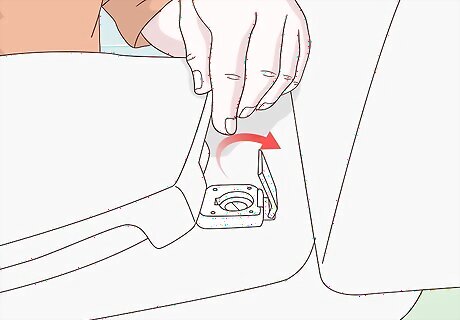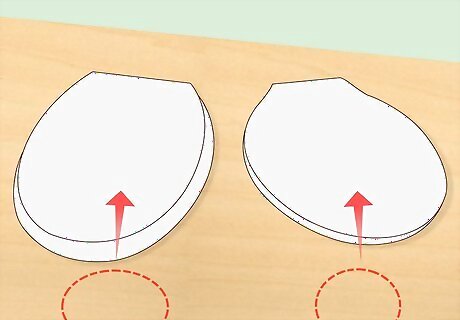
views
Tightening the Seat

Find the screws and pry up the cover. The back of your toilet seat is usually connected to the toilet with two long screws that run through the porcelain at the back of the bowl. The screws are secured by two nuts underneath. In the front of the cover, look for a small groove that is designed to help you pry up the cover. Then, use a small screwdriver to pry up both the seat and the cover. In cheap toilets, the screws are made of plastic. Most toilets, however, use steel screws, and more expensive models may even use brass or stainless steel. Be especially careful with plastic screws! To protect yourself from germs, put on protective gloves before you touch the toilet seat.

Center the toilet seat on the toilet. If the seat is loose, then it may wobble back and forth, in and out of alignment with the rim of the toilet bowl. Straighten out the seat so that it rests evenly atop the bowl. Consider sitting down to test it out for comfort.

Tighten the bolt. Turn the screwdriver clockwise to tighten. Remember: "righty tighty, lefty loosey." There's usually a nut with a wing attached to prevent the nut from turning. If there isn't, hold the nut with a rag while you tighten the bolt. Decide which screwdriver is the best fit. Make sure that the screwdriver head is big enough to fit into the notches of the bolt head. If the screwdriver is too small, then the bolt will not turn. The friction from the slipping screwdriver will quickly wear down the bolt and make it unusable. You'll have to reach underneath the toilet bowl to grip the nut that holds the screw in place.

Apply tension. If the bolt keeps turning without tightening up, clamp the nut underneath with a small pair of pliers. Clamp onto the end of the nut, and hold it steady as you screw the bolt. Once you have twisted the bolt several times, the wing on the nut should prevent it from turning anymore. To loosen the nut, spray it with WD 40 and wait 5 minutes.

Keep screwing until the seat is tight. When the bolt feels tight, give it one more quarter rotation so it's extra secure. Once the seat does not wobble back and forth, push down the lid. It should click closed. Don't overtighten the bolts, or you could break or crack the porcelain.
Replacing the Seat

Consider buying a new toilet seat. If the bolts are damaged or the toilet seat is still loose after you tried tightening it, then you may just want to replace the individual pieces but leave the seat intact. If the body of the seat itself is in poor shape, however, then you may just want to swap it out for the sake of longevity. Look for toilet seats at a local hardware or home-and-garden store.

Know which type of seat you need. There are two standard commercial toilet seat shapes: round and elongated. The round seats are perfectly round, while the "elongated" seats are oblong and egg-shaped. Buy the seat that matches your bowl. Try to find a seat made by the same company that manufactured your toilet to fit it perfectly. Off-brand seats may well do the trick, but they may not fit quite as precisely. Keep in mind that plastic toilet seats are easier to sanitize than wooden seats, and they hold their color for longer.

Install the new seat. You will need to unscrew the old seat, set it aside, and then tighten the new seat onto the bowl. Make sure that the new seat is aligned straight onto the toilet! Save the bolts and nuts from the old seat in case you need to replace a bolt on your new seat.














Comments
0 comment